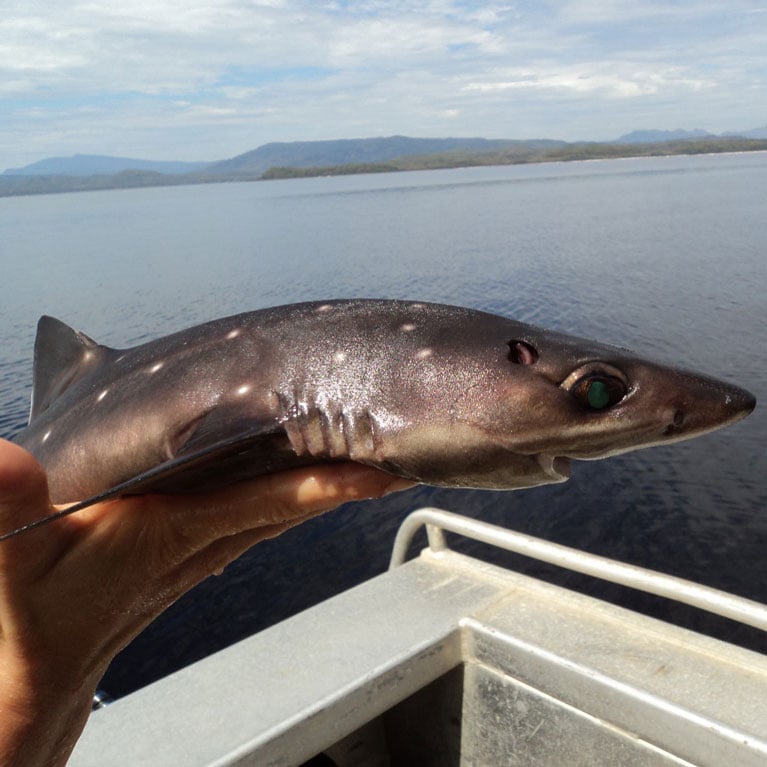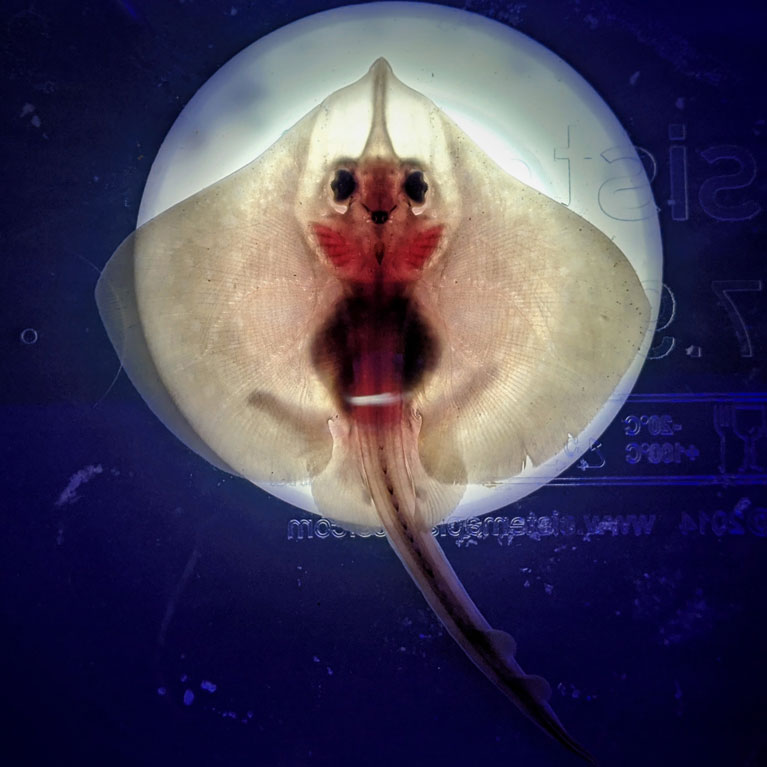Missing in Macquarie: the case of the disappearing Maugean skate
Macquarie Harbour in Tasmania is the last stronghold of the Endangered Maugean skate, the only chondrichthyan on Australia’s list of top 100 priority conservation species. Cynthia has been monitoring the skate’s population since 2014 and has observed its decline and a lack of new juveniles. Her hunch is that reproductive failure is to blame, most likely the result of pollutants in the highly impacted harbour, which has been subjected to mine dewatering, hydro-electricity production and, most recently, salmon aquaculture. Cynthia is compiling information on Maugean skate reproduction to inform a species recovery plan.
My passion for marine life started when I was a child and I used to go fishing with my grandfather. I was born in Buenos Aires, Argentina, where I undertook my undergraduate and Honours studies. In 2002 I moved to Australia to pursue a PhD at the University of Tasmania. My primary research interest involves aquatic vertebrates, mainly fish and chondrichthyans, specialising in the use of physiology and reproductive endocrinology as tools for the conservation and sustainable management of marine wildlife resources. At the same time I conduct basic research into the physiology and reproductive endocrinology of...


The reproductive health of the endangered Maugean skate: steps towards conservation
The key objective of this project is to help prevent the extinction of the Maugean skate. In the long term my key objective is to raise awareness that the way we use our ocean will need to be transformed if we are to ensure that marine wildlife can survive.
In recent years we started witnessing a decline in the number of Maugean skates and the absence of juveniles. The species is facing risk of extinction. We are in conversation with government authorities at national and state level to implement a recovery plan for the species. This project will provide information about the reproductive capacity and state of health of the Maugean skate to predict its future survival.
The Maugean skate Zearaja maugeana is an Australian species endemic to Macquarie Harbour, an isolated estuary in western Tasmania and the only remaining stronghold for the species. This small (276-square-kilometre; 107-square-mile) estuary has been severely impacted by human activities. Impacts from mine dewatering, changed river flows associated with hydro-electricity production and, more recently, salmon aquaculture, have been linked to important environmental and chemical changes and degradation in the area.
Since 2014 we have been monitoring the size of the Maugean skate population and in recent years have witnessed a critical decrease as well as a lack of juveniles, which put the species at risk of extinction. This decrease, coupled with the skate’s very limited range, has led to the Maugean skate being listed as Endangered by the IUCN, nationally under the Environmental Protection and Biodiversity Conservation Act (Commonwealth) and regionally under the Threatened Species Protection Act (Tasmania). It is the only chondrichthyan in the top 100 conservation priority species in Australia.
We believe the decline in the Maugean skate population is a result of reproductive failure over the years, as the primary requirement for the successful propagation of any species is its ability to reproduce and contribute to future generations. The condition of Macquarie Harbour, which has been severely impacted by human activities (such as the release of chemical pollutants), is probably the reason for the Maugean skate’s reproductive failure.
Considering the current conservation status of the species and the high risk of extinction, it is imperative to implement an effective recovery plan. We are in conversation with national and local government authorities about implementing a recovery plan, but to ensure the success of any conservation action over time – and the survival of the Maugean skate – we must also address the health of this unique species and its ability to produce future generations.
The broad aim is the recovery and further protection of the Maugean skate. The immediate objective is to collect information about the reproductive health of the species that can be incorporated in the recovery plan. The specific aims are:
- To explore the reproductive health of Maugean skates by examining the effects of marine pollution on the reproductive physiology, including reproductive hormones and male fertility.
- To explore stress in Maugean skates by assessing both nutritional stress and general health stress.
- To write a comprehensive report that will be distributed to government stakeholders for use in the recovery plan.
Public presentation at MODS: Save Our Seas Distinguished Speaker Series :Missing in Macquarie: The Case of the Disappearing Maugean Skate.

